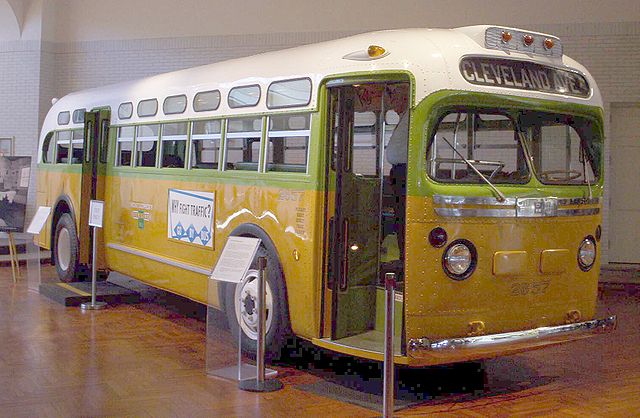*Image Credit: Wikimedia Commons Almost a year after a woman named Rosa Parks was arrested for refusing to sit in the back of a National City Lines bus in Montgomery, Alabama, the United States Supreme Court upheld a ruling which struck down local and state laws allowing segregation on November 13, 1956. A month later, the Montgomery Bus Boycott — an early moment for the Civil Rights Movement in America — would finally come to an end. In the post-Civil War South, the end of slavery created a whole host of problems for African Americans freed as the former Confederate States re-entered the Union. As the region rebuilt, legislators introduced a variety of statutes to establish segregation as a truly legal practice, as opposed to other states which used social action to deny privileges on the basis of race. When the Supreme Court ruled in Plessy v. Ferguson that facilities need only be “separate but equal” — an idea nearly impossible to enforce — the constitutionality of such practices was upheld in 1896. The result of all this work, then, would be distinct schools for white and black children, restaurants favoring one race over another and public services like water fountains and bathrooms set apart for people of color. Companies were allowed (and perhaps even encouraged) to create policies to maintain this distance, which is why the city of Montgomery allowed National City Lines to designate specific areas in its buses for African-American patrons near the back and rules requiring blacks to stand if a white person wanted their seat. On the evening of December 1, 1955, Rosa Parks boarded the No. 2857 bus for the ride home. A couple of stops later, a number of white patrons boarded and the driver came back to move Parks and three others from their seats. Sliding toward the window, she refused to stand up. When the driver threatened to call the police, she politely replied, “You may do that.” Though not the first person to refuse to give up her seat, Parks immediately became the best candidate for the rigors of a court challenge being organized by the National Association for the Advancement of Colored People (NAACP). The following morning, at a meeting of the Montgomery Improvement Association, a young preacher named Martin Luther King, Jr. was put in charge of a bus boycott talked about amongst the Women’s Political Council and Montgomery-area churches. Comprising as much as 75 percent of ridership, there would be serious financial consequences when blacks stopped taking public transportation. The African-American community mobilized in impressive ways, organizing carpools and formulating new travel habits like walking and biking in order to give the demonstration more force. With simple demands for a strict dividing line for seating — not full integration — and courteous treatment, the local transit authority was soon facing empty buses when it would have had to give up very little. As the Browder v. Gayle case proved in District Court on June 4, 1956, there were far worse outcomes from the Montgomery government’s perspective. The ruling overturned state laws allowing for segregation, meaning a rider on any bus could theoretically sit wherever he or she pleased. Though blocked temporarily by the state’s appeal to the highest court in the land, the victory for the NAACP and African-Americans everywhere was clear. Finally, on November 13, 1956, the Supreme Court upheld the ruling. The policy of “separate but equal” seating on city-operated transportation was now unconstitutional. Once the ruling went into effect on December 20th, African-Americans returned to the buses after 381 days. Beyond Alabama, the Montgomery Bus Boycott had done wonders for the national discussion on segregation and mobilized the African-American community to a far greater extent. At the same time, King gained a wider audience, laying the foundation for a rise to prominence that would help the Civil Rights Movement gain steam over the next decade. Also On This Day: 354 – Saint Augustine of Hippo is born 1002 – King Aethelred II of England orders the St. Brice’s Day Massacre 1887 – Violent clashes between Irish protestors and police in London become known as Bloody Sunday 1969 – The March Against Death, an anti-war demonstration, occurs in Washington, DC 1970 – As many as 500,000 people are killed when a cyclone makes landfall overnight in Bangladesh (then East Pakistan)
November 13th – 1956 CE – The United States Supreme Court Strikes Down Bus Segregation Laws
*Image Credit: Wikimedia Commons Almost a year after a woman named Rosa Parks was arrested for refusing to sit in the back of a National City Lines bus in Montgomery,…
539
